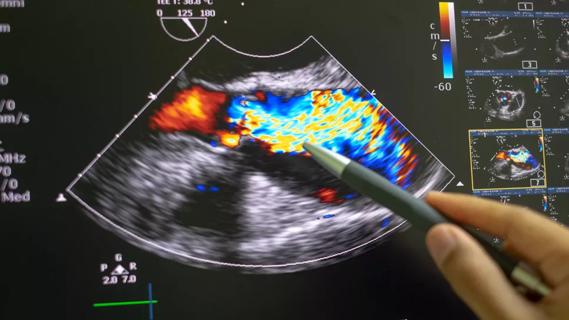Advertisement
Study shows need for respiratory symptom vigilance

The presence of chronic obstructive pulmonary disease (COPD) in patients with chronic kidney disease (CKD) greatly increases the risk of death, particularly due to pulmonary-related causes, a first-of-its-kind study by Cleveland Clinic researchers has found.
Advertisement
Cleveland Clinic is a non-profit academic medical center. Advertising on our site helps support our mission. We do not endorse non-Cleveland Clinic products or services. Policy
In a retrospective review of one of the nation’s largest registries of CKD patients, the researchers found that COPD was associated with a 41 percent increased risk for all-cause mortality and a fourfold increased risk for respiratory-related deaths.
While additional research is needed to determine the biological mechanisms that link the two conditions, the findings should further sensitize CKD caregivers to the need to closely monitor patients with respiratory comorbidities, one of the study’s investigators says.
“Our research identifies a very high-risk subset of CKD patients whose chances of pulmonary-related death are much greater than deaths due to cancer, heart disease or other causes,” says Glickman Urological and Kidney Institute emeritus staff member Joseph Nally Jr. MD. “As a clinician, I would be even more vigilant in treating COPD exacerbations in CKD patients.”
While COPD is associated with higher mortality in the general population, its mortality impact on CKD patients, as well as its prevalence, had not previously been thoroughly investigated.
To gain insight on these issues, Dr. Nally and colleagues including lead investigator Shankar Navaneethan, MD, of Baylor College of Medicine conducted an analysis using Cleveland Clinic’s electronic medical record (EMR)-based CKD registry.
Advertisement
The registry was established to develop quality-of-care programs, facilitate disease outcomes research and evaluate CKD intervention efforts. Its large cohort enables researchers to examine CKD comorbidity subsets that may be small, percentagewise, but still represent thousands of patients and generate statistically robust data and observations.
The CKD registry includes patients who have had at least one face-to-face outpatient encounter with a Cleveland Clinic health care provider and two or more estimated glomerular filtration rate test results of 15-59.9 mL/min/1.73 m2 at least 90 days apart. In the study period of January 1, 2005 through December 31, 2012, 56,690 patients met these criteria.
The researchers defined COPD as the presence of two relevant International Classification of Diseases, Ninth Revision (ICD-9) codes and use of COPD-management medications as documented in the EMR.
Of the 56,690 CKD patients in the study cohort, 4.7 percent (2,667) had underlying COPD. The researchers note that this is probably an underestimate of COPD prevalence, considering the absence of pulmonary function spirometry data and the fact that 63 percent of adults in the general population have some evidence of impaired lung function but lack a definitive diagnosis of lung disease.
“We suspect the actual COPD prevalence in CKD could be substantially greater than what our study indicated,” Dr. Nally says.
There were 15,969 deaths among the study cohort during the median follow-up period of 3.7 years. The proportion of those CKD patients alive with and without COPD differed significantly. COPD was associated with a 41 percent increased risk for all-cause mortality (hazard ration [HR] 1.41, 95 percent confidence interval [CI] 1.31-1.52, p ˂ 0.05). In CKD patients with underlying COPD, the risk of dying from respiratory causes was four times greater than the mortality risk from cancer, heart disease and other diseases (sub-HR 4.36, 95 percent CI 3.54-5.37).
Although the study was not designed to investigate why the presence of COPD in CKD heightens mortality risk, the researchers suggest several potential factors:
Advertisement
The findings underscore the need for a multidisciplinary approach to CKD care, and for heightened vigilance regarding respiratory symptoms in CKD patients.
“I think the prudent thing to do would be to fully evaluate CKD patients with dyspnea, taking into consideration not only potential cardiac sources but also putting a focus on pulmonary function testing,” Dr. Nally says. “Clinicians should keep COPD in play as a diagnostic alternative or a comorbidity.”
Utilizing Cleveland Clinic’s CKD registry, Dr. Nally and his colleagues plan to investigate the potential mortality impacts of other respiratory comorbidities, including pulmonary hypertension and obstructive sleep apnea.
Advertisement
Advertisement

The agent-based model aims to improve prediction accuracy

VOC analysis could provide biological insight into risk factors associated with CDI

Quantum computing being studied as a means to help improve predictive performance, accuracy

A review of conservative, pressure-based and surgical treatments for OSA

A review of IDSA and NIH guidelines

Volatile organic compounds have potential in heart failure diagnostics

Caregivers are provided with real-time bronchoscopy patient findings

Insights for diagnosing, assessing and treating